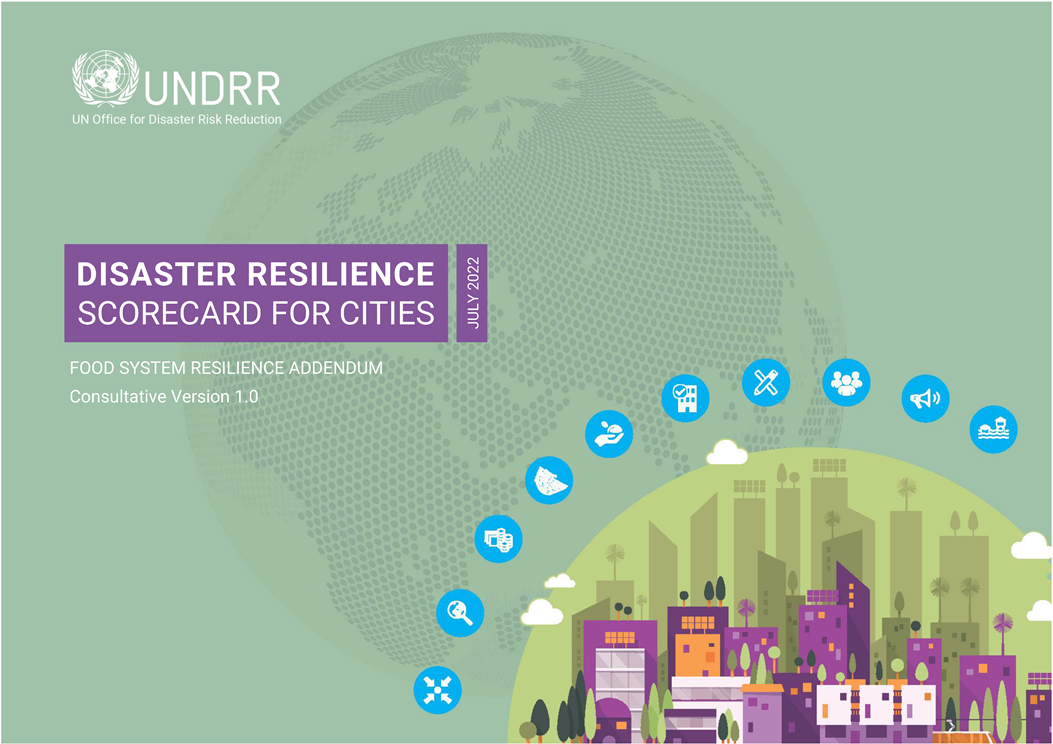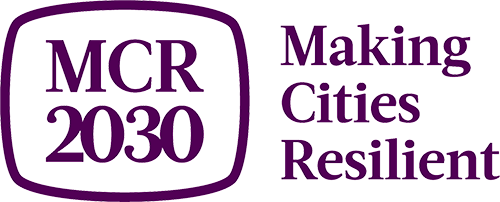Disaster Resilience Scorecard for Cities: Food System Resilience – Addendum

An Addendum to the Disaster Resilience Scorecard for Cities
"Disaster Resilience Scorecard for Cities: Food System Resilience – Addendum" is structured in sections around the same “Ten Essentials for Making Cities Resilient” as the Scorecard. The Ten Essentials provide a holistic coverage of the many issues that affect resilience in the “system-of-systems”, which make up a system. This includes food production, supplies, transport and services.
- Integration of the food system and governance (Essential 1);
- Integration of the food system and disaster scenarios (Essential 2);
- Integration of the food system and finances (Essential 3);
- Integration of the food system and land use/building codes (Essential 4);
- Integration of the food system and ecosystem services (Essential 5);
- Integration of the food system and institutional capacity (Essential 6);
- Integration of the food system and societal capacity (Essential 7);
- Integration of the food system and infrastructure resilience (Essential 8);
- Integration of the food system and disaster response (Essential 9);
- Integration of the food system and recovery/building back better (Essential 10)
There are 29 indicators with a score of 0-5, where 5 is best practice.
What is a Food System?
The Scientific Group of the UN Food Systems Summit in 2021 identified food systems as the entire range of actors involved in the production, processing, distribution, consumption, and disposal of food products originating from agriculture, forestry, fisheries and food industries, and the broader economic, societal, and natural environments in which they are embedded. Production includes farming and pre-production actors such as input industries producing fertilizers or seeds. The range of actors includes those involved in science, technology, data, and innovation. Others include public and private quality and safety control organizations.
The Food and Agriculture Organization of the United Nations refers to a sustainable food system when it delivers food security and nutrition for all, in a way that does not compromise food security and nutrition for future generations.
Data you will need to complete this Addendum will include:
- Demographic data, including nutritional related statistics (especially for stunting);
- Food system capacity, infrastructure, stakeholders and planning documentation;
- Data on ecosystem services, finance, resilience capacities and food system outcomes of previous disasters, if available;
- Climate change-related assessments, trends on climate if these exist, and how they affect the food flows (price volatility, availability, etc.);
- Emergency management planning and procedural documentation
This addendum is available in different file formats:
- The PDF version contains assessment details in a printing-friendly format.
- The excel tool allows you to provide interactive scoring, take note of the assessment rationale, and provide proof for verification. The excel tool can produce the pictograms showing the results of analysis at the end which are highly useful for planning and decision making. It complements the narrative provided in the PDF version.
Download Scorecard
Select your language:

